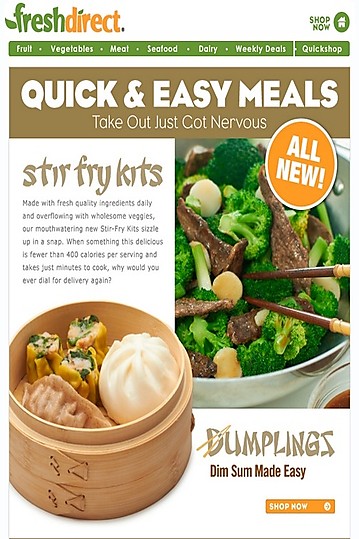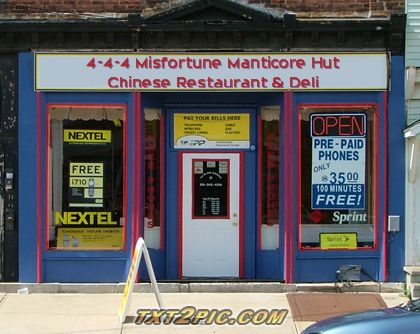
Ever wonder where those ubiquitous pseudo-Asian “chopstick” fonts that are routinely used to mimic Asian languages come from? Jeff Yang tackles the history of this typeface, and the casual racism that arises from its usage, in his latest article: Is Your Font Racist?
The roots of the font seem to be an attempt to emulate the swashing brushstrokes used in Chinese calligraphy. “But of course, the problem is that they were drawing these fonts, not painting, and following pen conventions rather than brush ones,” he says. “That’s why you get these stark daggerlike shapes, that to the untrained eye, may look like ‘Asian’ script” — but which in reality simply signify a generic exotic, non-Western aesthetic.
Since they were first invented, chop suey/chopstick fonts have been used in a broad-spectrum manner to represent faux Asian culture, often paired with extremely stereotypical representations of Asian people. (“You’ll see caricatures with slanted eyes and buck teeth,” says Shaw.)
Given the unpleasant associations of the typeface, why did so many Asian eateries end up adopting it? “In many places it’s become a signaling device,” he says. “Fail to use this kind of lettering and you run the risk of being overlooked. If your sign is something really nice in Helvetica, people might go, ‘Is that really a Chinese restaurant?’ So there’s a commercial incentive for takeout places to use this typeface. And not just Chinese restaurants — I’ve seen Japanese, Korean, even Indian restaurants use this style of type, which of course makes absolutely no sense.”
This final paragraph also brings to mind the entire practice of naming one’s Asian eatery with stereotypical names, in addition to using a yellowface font. How many Asian restaurants and grocery stores include some combination of the words “Golden”, “Lucky”, “8”, “Jade”, “Palace”, and “Dragon”? Of course, unlike font choices (which is ideally arbitrary), the choice to name one’s business is often based on an English translation of a Chinese name that has been chosen to invite fortune and prosperity. But one wonders: if Chinese restaurant names are so stereotypical as to inspire multiple random Chinese restaurant name generators on the Internet, is there a specific naming tradition (and associated imagery, e.g. dragons, pandas, cherry blossomes, etc) that have, themselves, become a Asian cultural signifiers? Further, is there a commercial incentive to Chinese restaurant owners to perpetuate these stereotypical names in order to signal their eatery’s Asian authenticity and thereby attract non-Asian clientele looking for their next Far Eastern fix?
The popular consequences of such stereotypes is a collection of cultural icons and imagery that are used by both Asians and non-Asians alike to evoke the East; and, the popular usage of these signifiers by Asians helps to maintain a sense of authenticity while assuaging any concerns over the casual racism of these icons. The long-term consequences are most galling when some enterprising businesses, hoping to titillate their clientele with exoticism, puts together a potpourri of Orientalist signifiers to build their own authentic-Asia-from-scratch. Take for example, Zynga’s new Jade Falls Farmville add-on, a vomitous blending of every East Asian icon one can imagine (irrespective of ethnicity), complete with dragons, pagodas, cherry blossoms, fishing boats, and even a shiba dog. This is cultural yellowface, at its finest.

The question remains: if members of the Asian community are in part contributing to the perpetuation of certain stereotypical Asian cultural signifiers, which are then used and abused by non-Asian enterprises to exoticize the Far East, how do we break the cycle? Do we discourage Asian business owners from falling into the stereotype? Do we put an intra-communal moratorium on chopstick fonts and “Lucky Dragon” restaurants?

